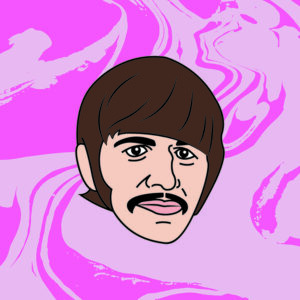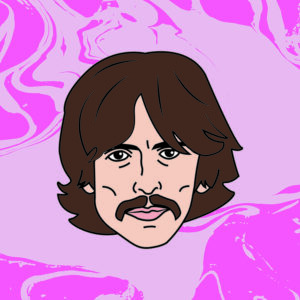Course dives deep into the Beatles
In the catalog of ’60s music, the Beatles stand out from other rock bands. “You can think critically about their music and walk away in awe,” says Marietta Cheng, music professor and University Orchestra conductor. Since 2019, she’s taught a 100-level course on the band that changed rock music. “I came to the Beatles because I loved them as a teenager, but also because I found them as a vehicle [through which] you could learn more about music,” Cheng says. “And the students wanted to learn about rock ‘n’ roll. So, it was an easy entree into saying, ‘To gain insights, learn the musical terms. This is the rhythm. This is the melody. This is meter. This is syncopation.’”

Learn some little-known facts about the Beatles from Cheng:
Until 1964, they weren’t the skilled songwriters we came to know. The Beatles formed in 1957 and spent years honing their craft. “They were experimenting with their songwriting to make it original. A lot of other bands think, ‘I want to become known right out of the block in the first year.’ That doesn’t allow them enough time to think about things deeply. The Beatles had that time.”

None of the Beatles could read music. Paul McCartney dabbled in piano and trumpet lessons, but no member had any formal music education. They didn’t want to understand key elements of music, like harmony and chords, because they didn’t want to be held back by rules. “By not knowing the rules of grammar in music, it meant they could try anything they wanted to try.”
The Beatles’ studio experimentation was a turning point for the rock genre. They made bold moves by playing tapes backward, changing where microphones were placed, and stuffing sweaters into bass drums. John Lennon wasn’t a mechanical whiz, so he’d describe the sound he wanted to create by saying things like “make my voice sound like it’s smothered in ketchup.” Producer George Martin and recording engineer Geoff Emerick did the rest. “They made rock into art.”

McCartney and Lennon were only a songwriting duo until 1965 or 66. They soon wrote independently, and by 1968, they didn’t write together much at all.
What about George and Ringo? George Harrison was the youngest Beatle, joining the band when he was just 15. “John and Paul, the number one team, didn’t initially feel they should give a lot of time to George’s songs, because as a songwriter, he was a Johnny-come-lately.”

Ringo Starr was the Beatles’ second drummer, following Pete Best. Starr was particularly good at drum fills, or brief transitions at the end of lines. He got the gig because he was already friends with the other three musicians. “If you needed a buffer between strong egos or personalities, he really was good for that. He helped the band get along.”
Their image was carefully crafted by manager Brian Epstein. “Their image of being very witty and innocent and somebody you could take
home to Sunday dinner worked really well.”

Professor Marietta Cheng’s Homework Assignment
Think critically about these Beatles songs. Consider their lyrics and melodies, how they’re alike and how they differ.
“Lucy in the Sky with Diamonds”: “Was it [written] just because of [Lennon’s] son’s drawing of a young child, Lucy? Or is it deeper? Is it about LSD? Maybe it’s just about a dream state.”
“A Day in the Life”: The song appears on Sgt. Pepper’s Lonely Hearts Club Band, which Cheng calls “revolutionary.” It’s a good example of Lennon and McCartney’s strong creativity, and also the way the Beatles began experimenting in the studio. Why do you think the song is so eye-opening?
“While My Guitar Gently Weeps,” “Penny Lane,” “Strawberry Fields Forever”: Each of the three songwriters (Harrison, McCartney, and Lennon, respectively) had individual approaches. What differences do you notice?
“I found it incredibly exciting to learn about the innovations in terms of lyrics, melodies, cover art, albums, and more to see what really set some bands apart from others.”
— Tyler Krantz ’21
